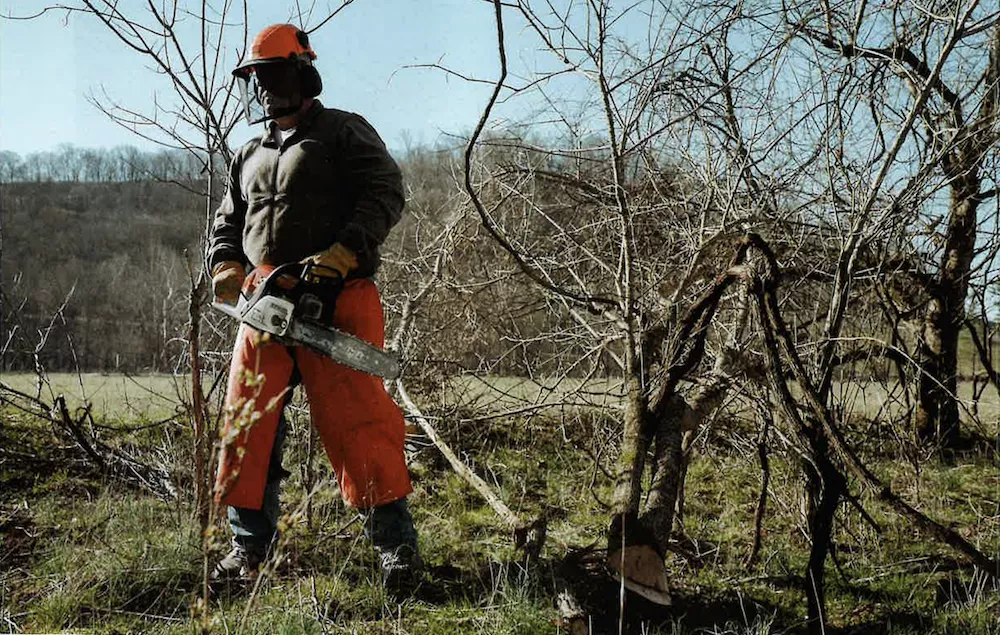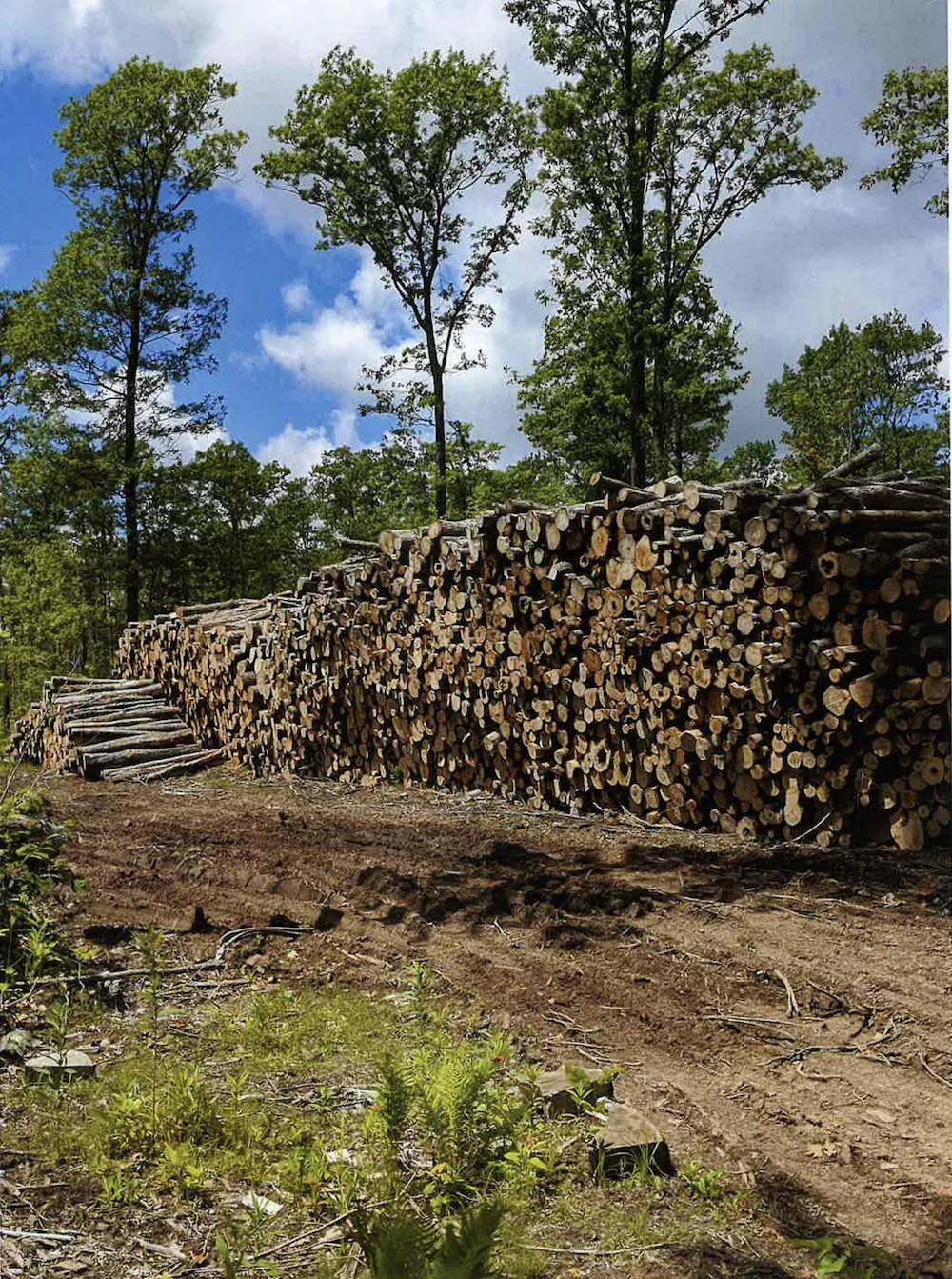Forest Product Markets – What it Means for Habitat
Featured in Covers Magazine, Ruffed Grouse Society & American Woodcock Society
By: Forrest M. Gibeault
As a forest analyst and timberland investment advisor, I study, track and analyze the relationships within the timber industry. As the old saying goes, “If there’s one thing you can count on, its change.” That’s certainly the case with forest-product markets and timberland management. The dynamics of these markets are complex, and like it or not, are directly linked to global economics. So, let’s investigate stumpage markets (the price paid for standing trees, byproduct type – typically sold to logging firms) and the activities of larger private timberland owners in the Lake States region to understand better the connectedness of timber markets and the ability to perform forest management.

Changing Markets
Timber markets in the Lake States have been relatively stable over the past 40-years. Compared to eastern U.S. regions, the Lake States is noted for consistent roundwood (processed logs or pulp sticks prepared for delivery to mills) demand and healthy stumpage. However, since the recessionary period beginning around 2008, stumpage markets have changed behavior, becoming cyclic, and like many other products, difficult to predict. Let’s use the prized hardwoods in this region as a test case. High-quality red oak and sugar maple have seen shifts in consumer preference and market dependency. Red oak was the preferred species for finish work and cabinetmaking in the U.S. in the 1980s and 90s and was valued about 50 percent higher than sugar maple. About 75 percent of domestic red oak production was consumed in the U.S. at that time. Around the year 2000, consumer preference changed to “white woods” and cherry, and seemingly overnight, red oak pricing dropped to that of sugar maple. Since that time, red oak and sugar maple sawlog stumpage have generally trended together, but for much of the last 20 years, sugar maple stumpage has exceeded that of red oak. Now 75 percent of red oak sawlog production relies upon export markets, with the majority being consumed by Chinese buyers. History suggests that consumer preferences in the U.S. will change once again. These fluctuations in market cycles and species pricing pose challenges for foresters and timberland owners when considering harvest timing, performing habitat projects and balancing other landowner objectives.
You may have noticed pulp and paper mill curtailments and closures in the news and observed these events becoming ever more common. As markets and technologies have changed, the forest product industry has been challenged by declining fine-paper demand, increasing production costs and ownership changes, and pressuring earnings. Additionally, many of our largest facilities in the north country are old and not presently located in primary wood baskets, as many were established nearly 100 years ago. But, it’s not all doom and gloom, as many facilities are retooling and changing operations to produce packaging materials, textiles and other forest products expected to increase in future demand. These are expensive endeavors, so not all facilities will be capable of evolving in the face of quickly changing markets and economic pressures.
A common misconception is that all larger mills produce pulp and fine paper, but that’s not the case in Lake States. Many facilities produce specialty materials such as packaging and brown paper, siding, interior paneling and exterior sheeting. Many of these mills are young in comparison to larger paper mills and are located in strategic locations. As facilities evolve, forest practitioners and landowners will need to follow suit and consider how timber harvesting and management systems are executed.
 Large Private Timberlands
Large Private Timberlands
Historically, most of the larger private timberlands in the Lake States were owned by the vertically integrated pulp and paper mills. About 20 years ago, many of these facilities chose to sever the land component of these companies. In most cases, these more significant properties were sold to real estate investment trusts and timberland investment management organizations. The vast majority of these lands were open to public hunting and recreation and remain so today. The new landowners haven’t necessarily managed these assets more prudently; however, we must remember they are investments, and mangers look to take advantage of market opportunities, real estate options and new environmental values, such as forest carbon. In Wisconsin, larger private timberlands in corporate ownership exceeded nearly 1.2 million acres about 20 years ago. Following numerous sale events, this land base has decreased to about 600,000 to 700,000 acres. This trend continues to this day. It wasn’t until the start of farm abandonment in the 1930s that many of these larger private holdings fell into the matrix of the federal, state and county-owned public lands network that many of us know so well today. These large, private land holdings are integral to landscape-level habitat for ruffed grouse and woodcock and provide corridors between the matrix of larger public blocks.
Strong forest product markets provide large timberland owners the ability to focus efforts on long-term sustainable forest management. Changing and uncertain markets may pressure forest management decision making and increase the likelihood of small parcel (40- or 80-acre tracts) recreational land sales. We could debate the impact of small land sales in this region, but if you’re interested in maintaining hunger access on these large private blocks of timberland, you may hope for healthy and resilient forest product markets.
Lessons for Private Family Forest Owners
The ability to perform forest management on small family forest ownerships at scale is dependent upon a healthy forest product industry and supply chain. When only high-value product markets exist, the ability to perform many young forest timber harvest operations become a landowner cost and not a timber sale that results in net revenue.
When landowners invest in the development of a forest management plan, they’re armed with valuable knowledge getting them one step closer to habitat development. Through active timber management, landowners can do their part to support the forest-products industry and supply chain. Changing market dynamics and global uncertainty are challenges landowners can be overcome by way of being flexible and open to amending plan plan details, such as harvest timing and management systems, within the context of executing their core goals and objectives.
Timber markets are complex, and shifts in demand and stumpage pricing never result from just one input. Macroeconomics, local weather patterns, length of frozen ground conditions and many other factors affect mill demand and the supply of timber throughout the year. Additionally, these factors affect logger interest in certain timber sales, supply chain expectations in timber sale contract length and other items that landowners and foresters need to consider when offering standing timber.







